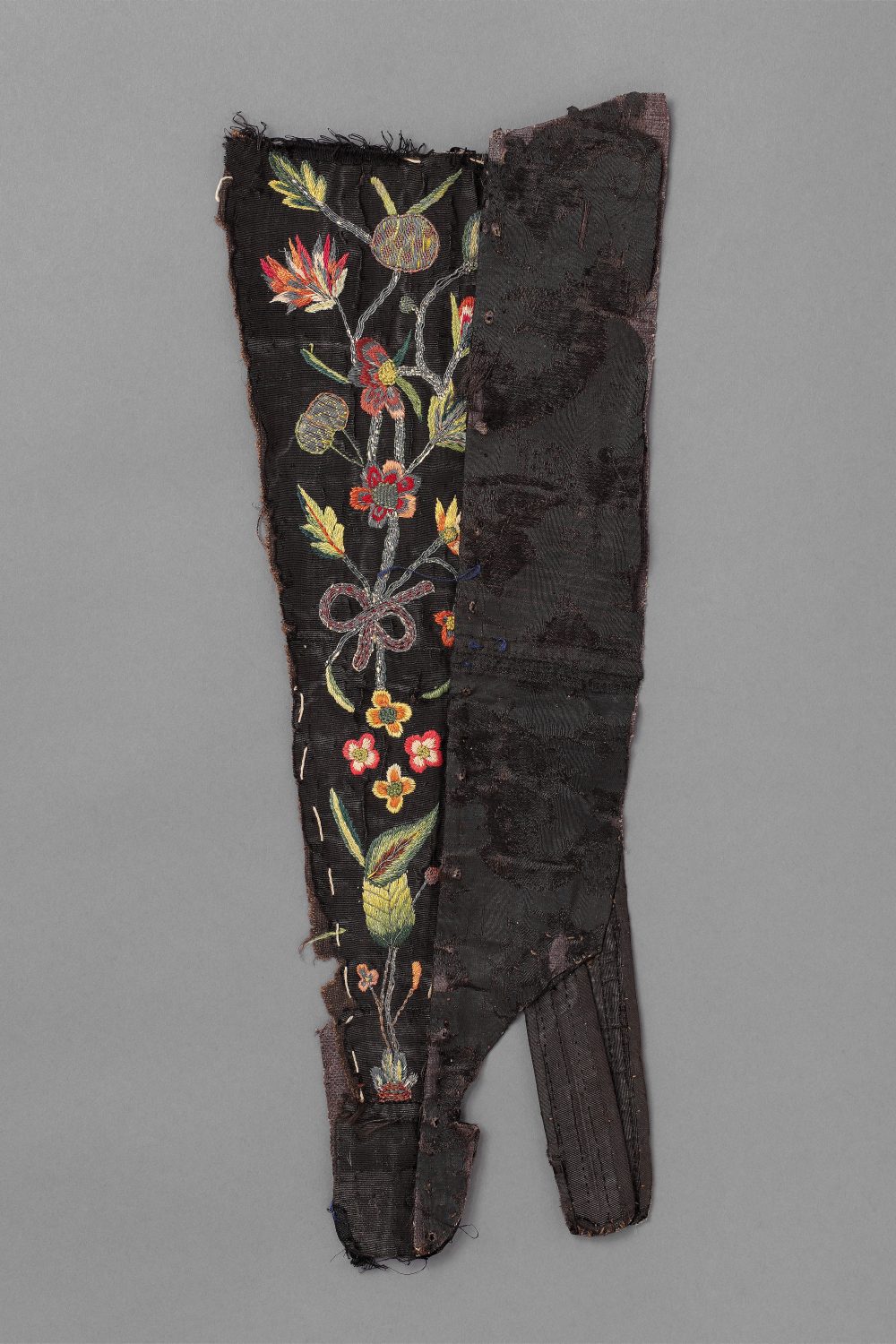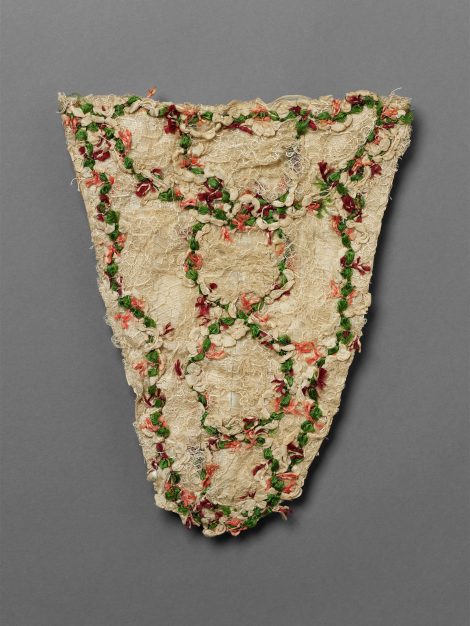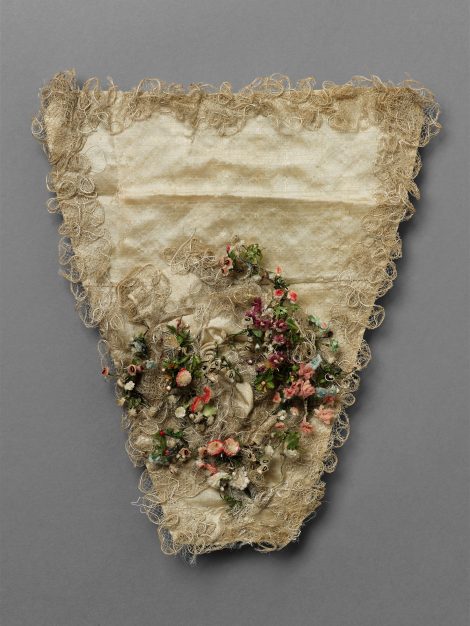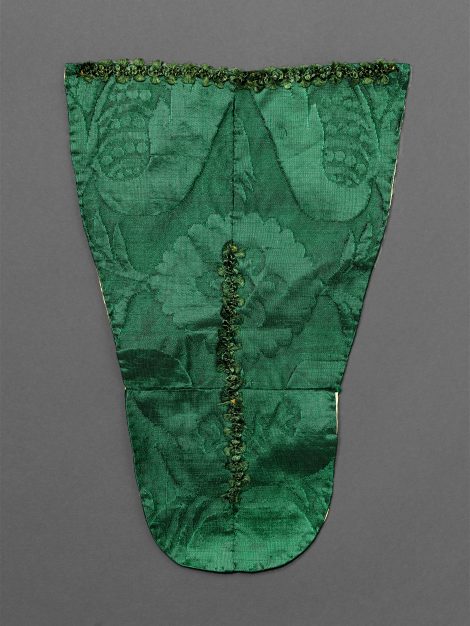Acquired from Jenny Pearson
Stomachers were flat, roughly triangular pieces of fabric that were pinned or sewn over the stays to cover the area exposed by the centre front openings of the bodices of 18th Century gowns. Loose informal gowns, held in at the waist but otherwise open above and below were worn by women as comfortable alternatives to more rigid dresses from the 1660s; the centre front bodice openings, covered by stomachers, and skirt openings, revealing petticoats (underskirts) remained as vestiges until fashion moved on in the closing decades of the 18th Century. Both stomachers and petticoats were subject to current fashions, discreetly matching the gowns with which they were worn, or providing contrast and decoration.
This example is the earliest in the John Bright Collection, dating from the first decades of the century. Long and narrow in contemporary taste, it is attached on one side to a piece of black silk, possibly worn velvet, down the inner side of which eyelet holes have been worked to hold cord lacing. Two bound-edged boned tabs are attached to its base on the outer side.
The stomacher is embroidered in an unsophisticated design, probably by an amateur hand, with coloured silk flowers and foliage in satin stitch and french knots, their stems in couched metal thread. A popular technique of 18th Century embroidery, couching used once glistening metal thread economically as it was laid on the surface only, caught down with small stitches. Varying the colour of these silk anchoring threads could add further decorative effect, as here.



